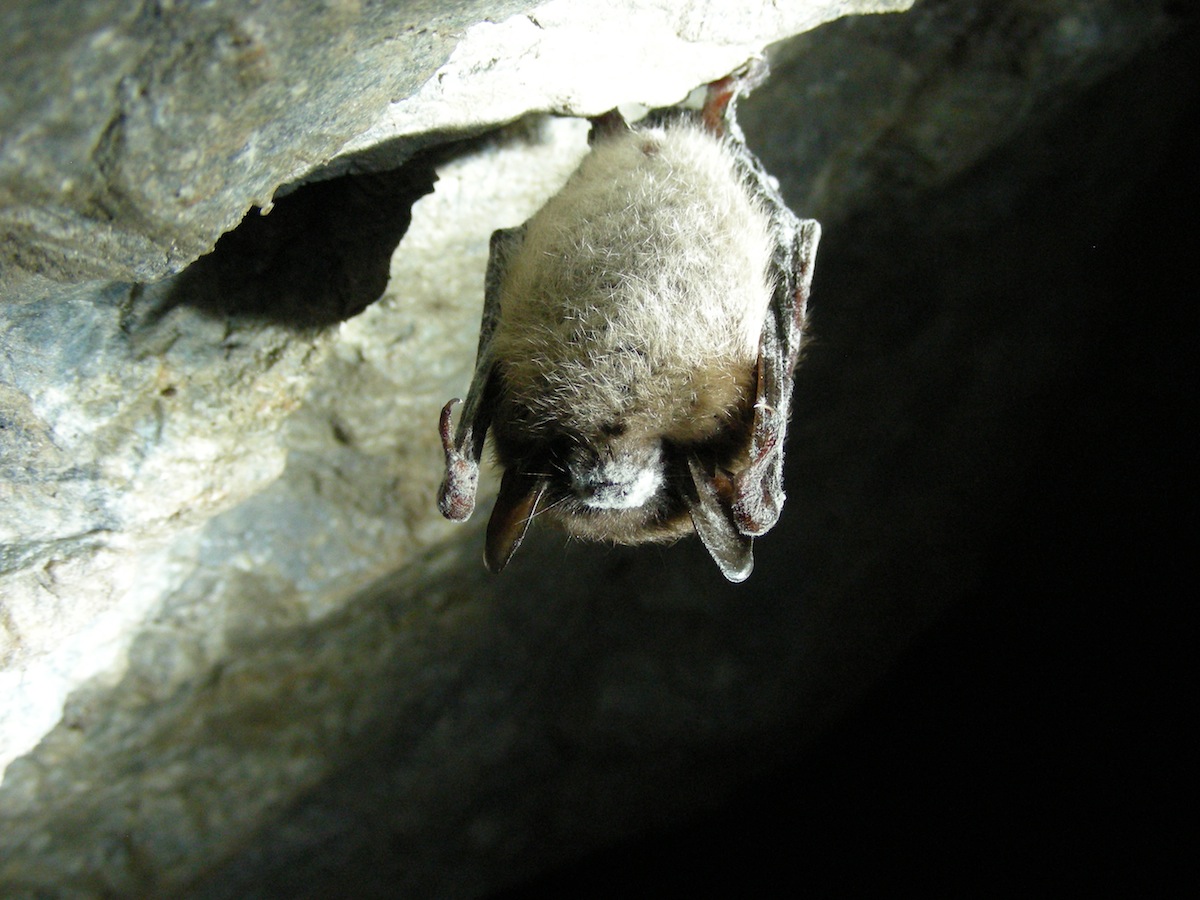The Local newsletter is your free, daily guide to life in Colorado. For locals, by locals.
Good news for troubled bats: Colorado is one of 28 states to receive a grant from the Fish and Wildlife Service to study white-nose syndrome, a deadly fungus killing millions of bats.
White-nose syndrome (WNS) is caused by the newly-discovered fungus Geomyces destructans. The fungus is named after the telltale white dusting that often appears on the noses, ears, and wings of affected bats. Scientists aren’t sure exactly how WNS harms bats, but they do know that the fungus disturbs bats’ ability to hibernate. Infected bats often awake from hibernation and burn through their winter fat stores too quickly.

First discovered in the winter of 2006-2007 in New York, WNS is quickly spreading across eastern North America. It has killed at least 5.7 million bats in 22 states and five Canadian provinces. While bats make some people squirm, they’re indispensable to modern agriculture. Bats save U.S. farmers more than $3.7 billion each year by devouring millions of crop-eating insects, according to a recent study in Science. They also act as pollinators and provide food for other animals, like birds of prey and raccoons.
Colorado Parks and Wildlife (CPW) will use the $41,500 grant to prepare for the inevitable spread of WNS to western states. Colorado is home to 18 species of bat, 14 of which hibernate in-state and might be vulnerable to the disease. Their first goal is to locate hibernation sites so scientists can monitor them for signs of WNS. Unlike eastern bats, Colorado bats don’t hibernate in massive colonies. Instead, they spread out into little groups hidden in tiny cracks and crevices in the mountains. This might slow the spread of WNS between bats, but it also makes finding and monitoring our bats very difficult. Pinpointing where bats hibernate will also help scientists count bats of each species and determine how badly WNS affects local population when it arrives. Lastly, CPW researchers are studying bat activity during the winter months. By knowing how much wakefulness or flying is normal for a bat in winter, scientists can better pinpoint bats that are acting strangely and might be sick.
Unfortunately, little can be done to thwart WNS once it arrives. Bats transmit the fungus to other bats, but humans can also spread it to healthy bats on clothing or caving gear. There are currently no known treatments for sick bats, and no way to disinfect caves to prevent the fungus from re-infecting healthy bats.
You can help: Colorado scientists are on the lookout for bats. This winter, keep an eye out for hibernating, dead, or active bats and report any sightings to Colorado Parks and Wildlife (303-291-7771 or wildlife.batline@state.co.us). Cavers are advised to respect cave closures and avoid using any gear or clothing previously used in caves east of the Mississippi River. Visit Whitenosesyndrome.org to learn more.
—Image courtesy of U. S. Fish and Wildlife Service Northeast Region








